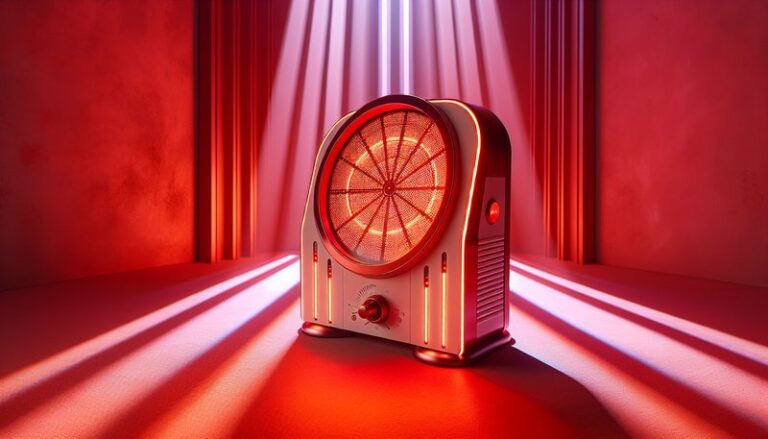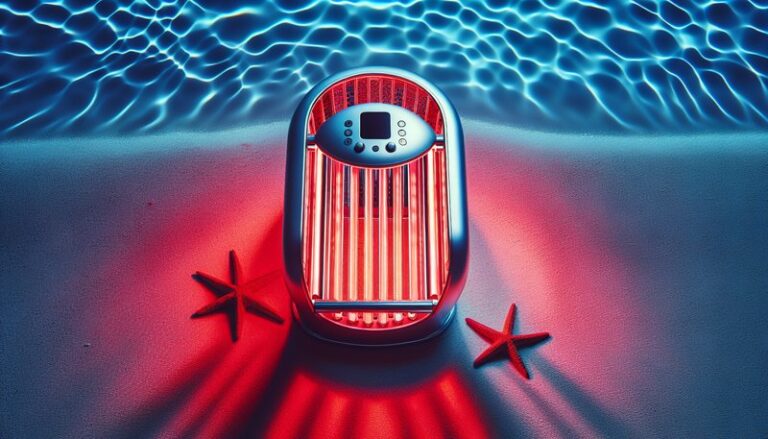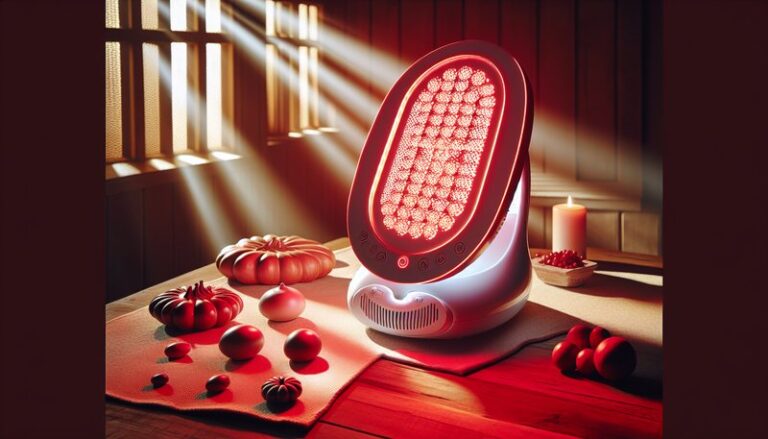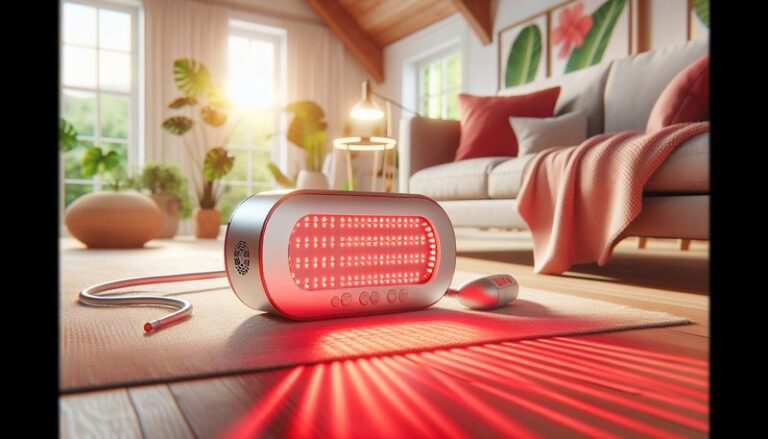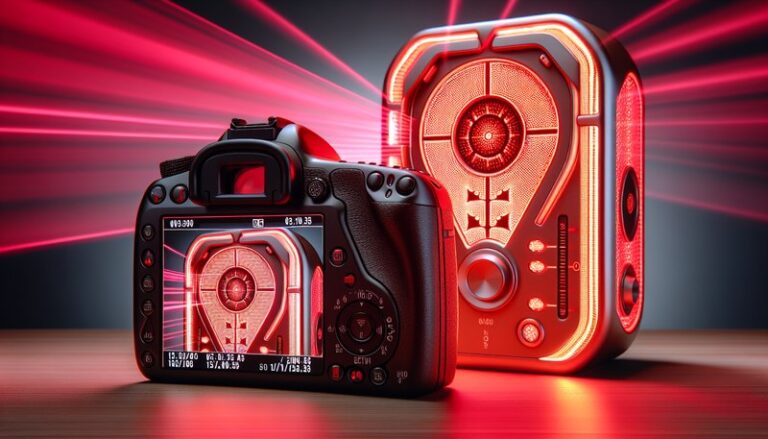What Does Full Body Red Light Therapy Do?
What Does Full Body Red Light Therapy Do?
Have you ever wondered if light can heal? Full body red light therapy is capturing attention for its myriad potential benefits. This innovative treatment uses specific wavelengths of light to target various health and wellness concerns, promising enhancements in skin health, healing, and even athletic recovery.
In this article, we will explore what full body red light therapy entails, the benefits it offers, practical considerations, and alternative therapies available to you.
Get the full context in Best Wattage for Red Light Therapy?
Key Takeaways
- Full body red light therapy involves exposure to red and near-infrared light, promoting cellular repair and rejuvenation.
- Benefits range from improved skin health and reduced inflammation to enhanced muscle recovery and mood elevation.
- While generally considered safe, there are specific factors and alternatives to consider before embarking on this therapy.
What is Full Body Red Light Therapy?
Full body red light therapy is a non-invasive treatment that utilizes low-level wavelengths of red and near-infrared light. These wavelengths penetrate the skin and tissue, stimulating cellular activity and repair processes. The therapy is often administered through specialized light panels or devices designed to cover the entire body or targeted areas.
The science behind the therapy is based on photobiomodulation, where light energy encourages mitochondria within cells to produce more adenosine triphosphate (ATP). ATP is essential for energy transfer within cells, thus promoting healing and regeneration.
The therapy is gaining traction not only in clinical settings but also in at-home devices, allowing individuals to experience the benefits in a comfortable environment.
What are the Benefits of Full Body Red Light Therapy?
The following benefits demonstrate the promising impacts of full body red light therapy:
Improved Skin Health
Red light therapy has been shown to enhance collagen production, aiding in the reduction of fine lines and wrinkles. Clinical studies indicate that regular use may improve skin tone and texture and help treat conditions such as acne and psoriasis.
Enhanced Muscle Recovery
Athletes and fitness enthusiasts are increasingly utilizing red light therapy for post-exercise recovery. It can reduce inflammation, alleviate soreness, and accelerate the healing process of muscles after intense workouts, thereby improving performance.
Pain Relief
Research indicates that red light therapy can help reduce chronic pain in conditions such as arthritis or fibromyalgia. The therapeutic light penetrates deep into tissues, promoting circulation and reducing inflammation, leading to significant pain relief for many users.
Mood Enhancement
Exposure to red light has been linked to the improvement of mood and overall mental health. Some users report reduced symptoms of depression and anxiety, likely due to enhanced cellular energy production and potential effects on serotonin levels.
Is it Possible to Use Full Body Red Light Therapy at Home?
Yes, full body red light therapy can be performed at home using various devices designed for consumer use. Many options are available, ranging from portable handheld devices to full-body light panels, allowing for convenience and flexibility in treatment schedules.
What are the Advantages of Home Use?
Convenience: Users can integrate therapy into their daily routines without the need for appointments at clinics.
Affordability: Investing in a home device can be more cost-effective in the long run, especially for those who plan to use therapy regularly.
Privacy: Many individuals prefer the comfort and privacy of their homes, especially when experiencing initial treatments.
What are the Disadvantages of Home Use?
Effectiveness: Some home devices may not be as powerful or effective as professional equipment, potentially leading to diminished results.
Guidance: Users may not have access to professional guidance on optimal settings or treatment plans, which could affect the benefits experienced.
Commitment: To achieve desired results, consistent usage is required, which may be challenging for some to maintain.
What are the Things to Consider Before Using Full Body Red Light Therapy?
Before starting any form of therapy, several important considerations should be taken into account:
Read our discussion on FDA Approved Red Light Therapy
Medical Conditions
Individuals with conditions such as skin cancer or those who are pregnant should consult with healthcare professionals prior to treatment. It’s vital to ensure that the benefits outweigh any potential risks.
Device Quality
Quality matters when selecting a home device. Ensure the device is FDA-cleared, has appropriate wavelengths (typically 600-650 nm for red light and 800-850 nm for near-infrared), and is from a reputable manufacturer.
Treatment Frequency
The recommended frequency can vary based on individual needs and desired outcomes. Understanding how often you should engage in therapy is crucial to achieving the best results.
What are the Alternatives to Full Body Red Light Therapy?
If full body red light therapy isn’t the right fit for you, consider these alternatives:
LED Therapy Masks
For targeted facial treatments, LED therapy masks harness similar technology to enhance skin health, improve collagen production, and address specific skin conditions.
Cryotherapy
This technique involves exposing the body to extremely cold temperatures to reduce inflammation, accelerate recovery, and improve overall wellness. Like red light therapy, cryotherapy has gained popularity in sports recovery.
Infrared Saunas
Infrared saunas deliver heat deeper into the body, promoting detoxification, improved circulation, and relaxation, while providing some benefits similar to red light therapy.
Conclusion: Is it Recommended to Use Full Body Red Light Therapy?
Full body red light therapy offers a range of health benefits, from skin improvement to pain relief and muscle recovery. While generally safe, it’s essential to consider individual circumstances, device quality, and consultation with healthcare professionals before starting therapy. For many, the convenience and potential advantages make it a compelling option for enhancing overall wellness.
Frequently Asked Questions
How long does each session of red light therapy typically last?
Sessions usually last between 10 to 30 minutes, depending on the area treated and the specific device used. It is recommended to follow the manufacturer’s guidelines for optimal results.
How often should I use red light therapy for the best results?
Most guidelines suggest using red light therapy 3 to 5 times per week for general wellness. However, the frequency can vary based on personal goals and the condition being treated.
Is red light therapy safe for everyone?
While generally safe, those with specific health conditions, especially photophobia or skin cancer, should consult with a healthcare provider before starting therapy.
Are there any side effects associated with red light therapy?
Red light therapy is considered low-risk, with minimal side effects. Some users may experience mild redness or warm sensations on treated areas, which usually resolves quickly.
Can I use red light therapy alongside other treatments?
Yes, in many cases, red light therapy can complement other treatments. However, it’s advisable to discuss this with a healthcare professional to ensure safe integration.

